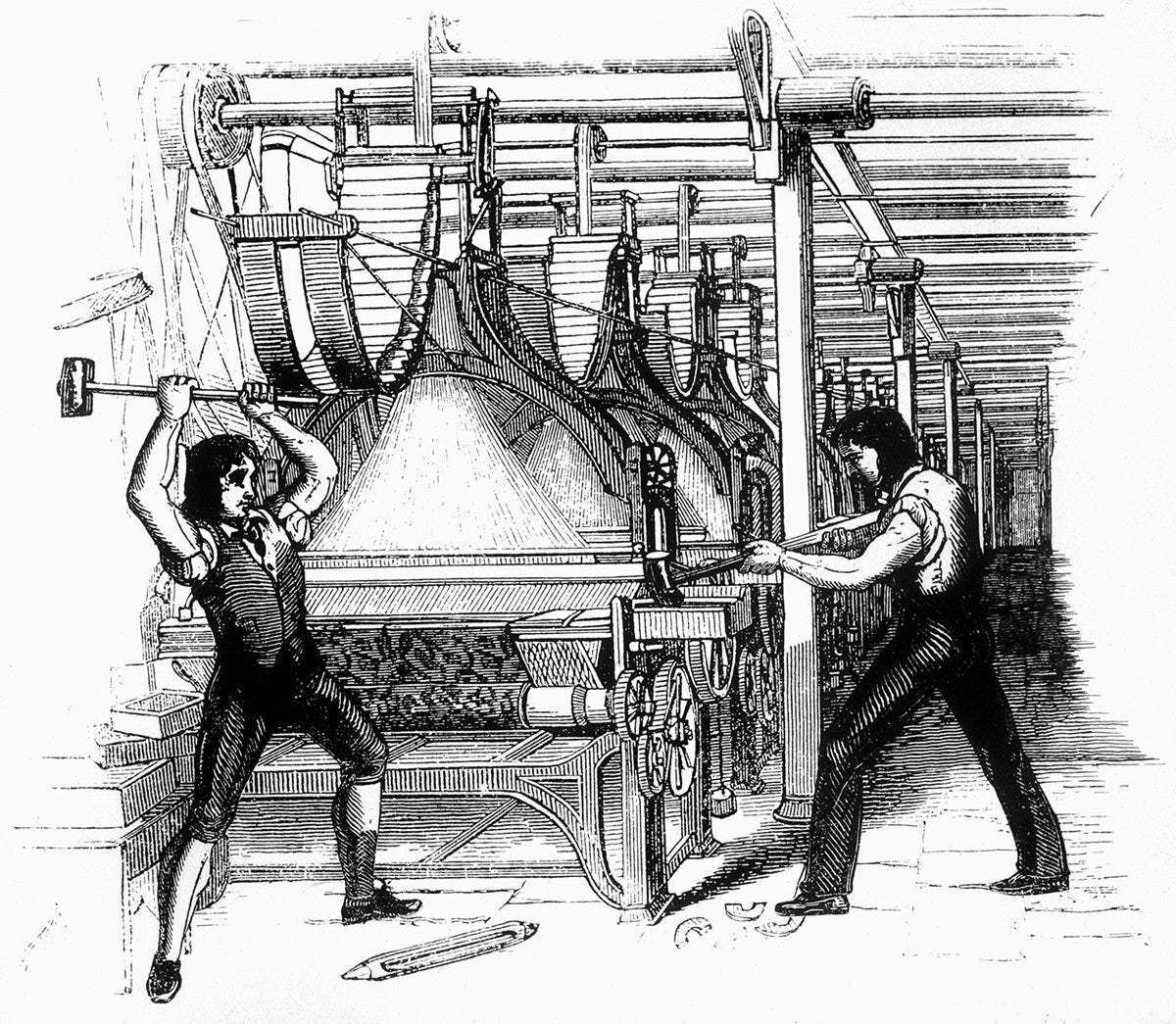Listen to this article as a Podcast and make sure to join the newsletter. Send to a friend and Substack will automatically upgrade you with free perks.
There’s an incredible amount of hype about whether AI is coming for your job. There’s an interesting new report that helps break this question down further: which type of AI might take which type of job, and where might it actually happen?
The report specifically looks at generative AI - tools like ChatGPT, Gemini, Claude - and looks at all jobs within the US. The researchers then break this down by counties that have the highest concentrations of those jobs which are at the highest risk. The results are fascinating and surprising.
The focus on generative AI vs. AI uses in robotics drives a helpful distinction in this work. The AI used in robotics is most likely to displace low-wage workers (warehouse jobs, manufacturing, food services, etc). Research from Nobel Prize winning economist Daron Acemologu at MIT found that for every robot added per 1,000 workers in the US, wages decline by 0.42%, and the unemployment-to-population ratio goes up by 0.2 percentage points. The team found that the results were most pronounced for low-wage workers. “Robots are most likely to affect routine manual occupations and lower and middle class workers, and particularly blue-collar workers, including machinists, assemblers, material handlers, and welders.” The automotive industry has adopted robots more than any other industry, the researchers write, employing 38% of existing robots with adoption of up to 7.5 robots per thousand workers.
But, generative AI is a different story. This technology is most likely to displace high-wage and highly technical jobs. There are a few places and industries in particular which are at highest risk.
What do we know about the impact of generative AI on the workforce?
On a recent episode of the Tonight Show with Jimmy Fallon, Bill Gates said that AI will replace doctors and teachers within 10 years and claimed humans won’t be needed ‘for most things’. I prefer to focus a bit more on some massive datasets to tell us what might really happen.
Two new datasets helps explain which jobs and which parts of the US are most at risk from the recent explosion in AI capabilities. The first comes from OpenAI itself, which published “exposure data” (downloadable here) that looks at occupations most at risk of disruption from generative AI and Large Language Models (LLMs). The second comes from Brookings and Lightcast which looks at which parts of the country are most concentrated in those occupations.
The team also makes sure to focus on the distinction that “exposure” is not the same as “displacement.” Mark Muro, the lead researcher, writes, “And it should be said, again, that “exposure” does not speak only to the displacement of workers; it also may involve their “augmentation” through rapidly improving AI tools such as ChatGPT, Claude, and generative AI-powered applications, which can enhance worker productivity and capability.”

The highest paying job which has the most exposure to generative AI is healthcare practitioner. When I saw this result, I had to say I was thrilled because I think there is probably no industry in America that is more broken than our healthcare system. I was also glad that this didn’t necessarily mean we were going to lose doctors, nurses, or home health aides, because so much of that in-person work is essential for providing quality care. However, the capability for generative AI to improve tasks, remove menial or unnecessary ones, and expand healthcare work is a welcome sign.
The job that has the largest exposure to generative AI (separate from how high it pays) is computer engineering.
Anyone who was coding before 2022 has used Stack Overflow. It was the best online forum for people to get answers to coding problems. After ChatGPT launched, the use of Stack Overflow plummeted, and within a year, the company had to lay off 28% of its staff.
So, what does this mean for inequality?
Low-wage jobs tend to have the lowest exposure to generative AI. When we look at the chart, it generally moves up and to the right. When incomes go up, so too does generative AI exposure, both across jobs and across regions.
This can generally be viewed positively for inequality — low wage workers do not stand as much of a risk of losing their jobs to generative AI as do people in high-wage jobs. If you are in an entry position or a middle-manager working in healthcare or computer software, you are at the biggest risk of being replaced by ChatGPT.
Which regions are going to face the biggest shifts?
The team found that “workers in high-skill metro areas such as San Jose, Calif.; San Francisco; Durham, N.C.; New York; and Washington D.C. appear likely to experience heavy disruption from generative AI, while those in less office-oriented metro areas such as Las Vegas; Toledo, Ohio; and Fort Wayne, Ind. appear far less susceptible. For instance, while 43% of workers in San Jose could see generative AI shift half or more of their work tasks, that share is only 31% of workers in Las Vegas.”
At the county level, exposure to AI varies widely, from elevated exposure rates of around 40% or more in high-paying tech, business, and finance locales such as Santa Clara County, Calif.; King County, Wash.; and New York County, to rates in the 30% range and even the 20% range in small and rural heartland counties.
But, there are huge variations even within states. Los Alamos County, New Mexico is the county with the highest exposure to generative AI (please don’t let the robots make a bomb for us), but the exposure rate in Lea County, New Mexico is half of that. The largest employers in Lea County (pop. 75,000) are the public school district and Walmart.
The Path Forward
The Luddites were a group of English textile workers who are famous for destroying machines in the nineteenth century because — as the story goes — they didn’t want the machines to take their jobs.
But, that isn’t really what happened at all. The story has become mythologized and the term ‘Luddite’ is now used synonymously with anyone who hates technology.
The reality is that the Luddites destroyed the steam powered looms and spinning jennies and the knitting frames because they “...just wanted machines that made high-quality goods,” says Kevin Binfield, editor of the 2004 collection Writings of the Luddites, “and they wanted these machines to be run by workers who had gone through an apprenticeship and got paid decent wages. Those were their only concerns.” They confined their attacks to manufacturers who used machines in what they called “a fraudulent and deceitful manner” to get around standard labor practices.
We’re seeing this degradation constantly. A lawyer in New York used ChatGPT to write the defense and it cited countless fake cases, leading to an unjust and embarrassing outcome for his client. An AI generated article called a dead NBA player “useless” in a horrific gaffe and disappointment to his family. Healthcare workers used it in chatbots for eating disorders that actually gave the exact opposite advice than it should have and made things worse.
Here are two ways we can increase the chances that even as jobs are displaced or augmented by generative AI, it doesn’t degrade the quality of work, or put workers in unsafe conditions.
Listen to this episode with a 7-day free trial
Subscribe to American Inequality to listen to this post and get 7 days of free access to the full post archives.













